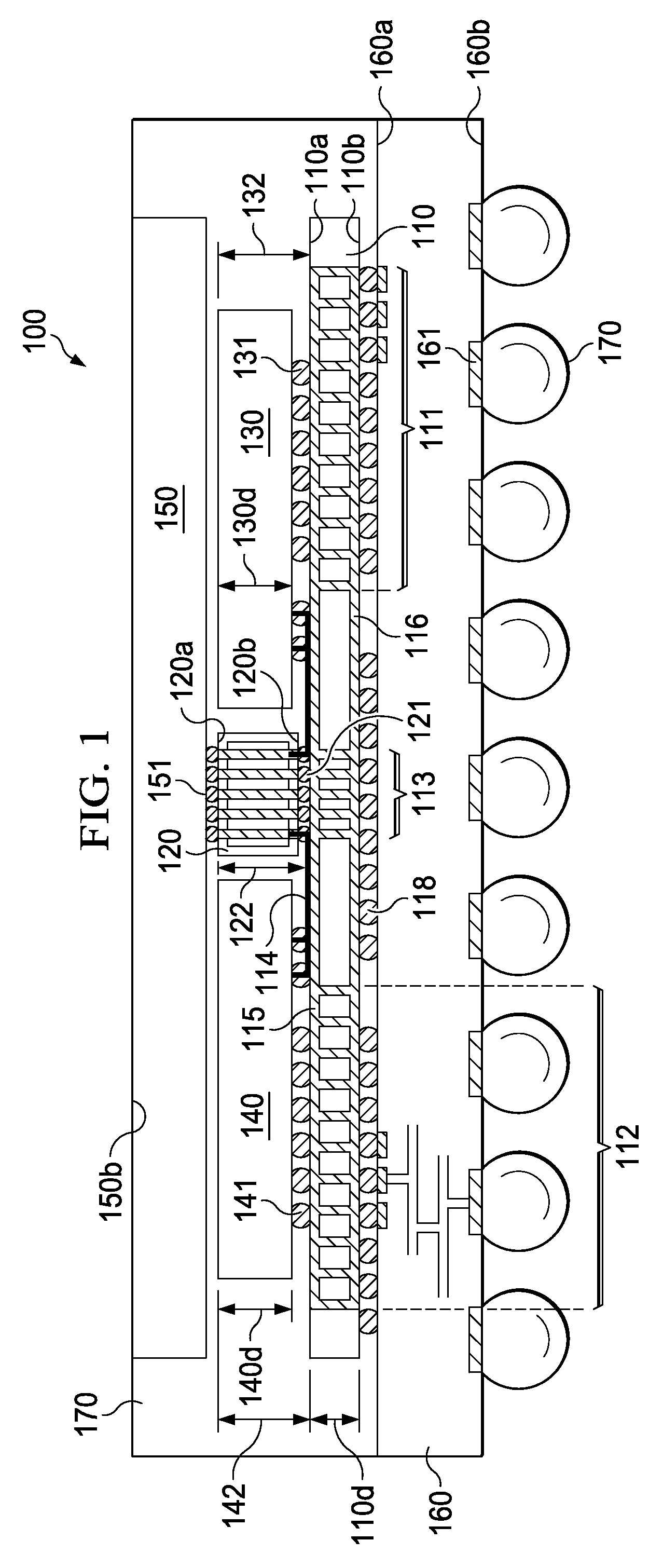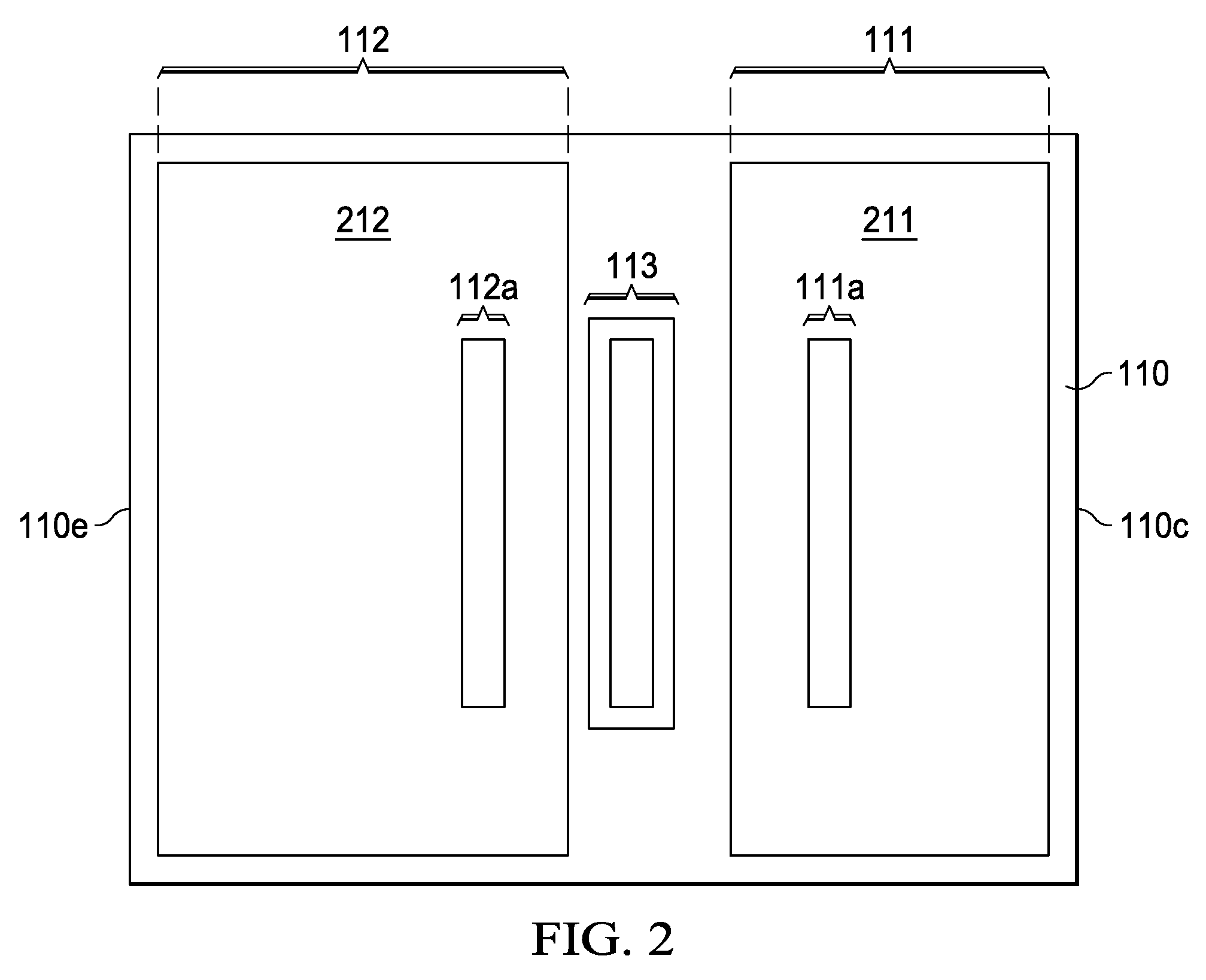3D semiconductor interposer for heterogeneous integration of standard memory and split-architecture processor
a semiconductor interposer and split-architecture technology, applied in semiconductor devices, semiconductor/solid-state device details, electrical devices, etc., can solve the problems of over-long signal paths of the standard interposer connecting the wide i/o memory to the second chip, supply problems, thermal dissipation issues for the sub-chips, etc., to avoid unbalanced thermo-mechanical stress within the device, minimize the needed board real estate, and enhance device reliability
- Summary
- Abstract
- Description
- Claims
- Application Information
AI Technical Summary
Benefits of technology
Problems solved by technology
Method used
Image
Examples
Embodiment Construction
[0016]FIG. 1 illustrates an exemplary semiconductor device generally designated 100 as an embodiment of the invention. Device 100 includes a first silicon interposer 110, a second silicon interposer 120, a first semiconductor chip 130, a second semiconductor chip 140, and a third semiconductor chip 150. Device 100 further includes a substrate 160, and may also include a packaging compound 170 encapsulating the interposers 110 and 120, first chip 130 and second chip 140, and at least portions of third chip 150. The not-encapsulated surface 150b of third chip 150 may serve as an attachment site for a heat spreader or heat sink, promoting effective cooling of stacked device 100.
[0017]As FIG. 1 shows, first silicon interposer 110 has a thickness 110d, a first surface 110a and an opposite second surface 110b; thickness 110d is preferably 50 μm, but other interposers may be thicker of thinner. A plurality of through-silicon vias (TSVs) extend through first interposer 110 from the first su...
PUM
 Login to View More
Login to View More Abstract
Description
Claims
Application Information
 Login to View More
Login to View More - R&D
- Intellectual Property
- Life Sciences
- Materials
- Tech Scout
- Unparalleled Data Quality
- Higher Quality Content
- 60% Fewer Hallucinations
Browse by: Latest US Patents, China's latest patents, Technical Efficacy Thesaurus, Application Domain, Technology Topic, Popular Technical Reports.
© 2025 PatSnap. All rights reserved.Legal|Privacy policy|Modern Slavery Act Transparency Statement|Sitemap|About US| Contact US: help@patsnap.com



